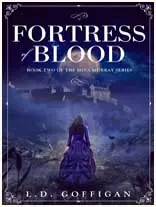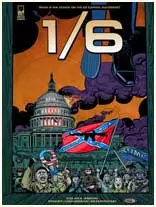How to Format a Book for Publishing

Are you constantly overthinking how to present your best-written novel without any errors, and are you finding it difficult to get over this? If you are a new writer, don't worry! This article will aid you with a useful and much-needed guide to making it easy for you to understand everything that is needed for well-off book formatting and overall better manuscript preparation.
Why is book formatting important?
Book formatting is an important element that is explicitly needed to improve the quality of your book. Its main goal is to enhance the reader's experience because book formatting can effectively make a major difference in whether your book is error-free or not. In a proper way, a properly formatted book not only looks good but is also easy to wear and looks professional, which is most important. Incorrect formatting, grammar mistakes, and especially uneven spacing can easily distract readers and ruin the start of your book.
A well-written book generally makes sense for both traditional publishing and self-publishing. Traditional publishers mostly demand industry-standard submissions and may reject book submissions for processing if they have editing or formatting issues. And if you publish it yourself, then here, too, it is important to take full care of formatting, including main font selection, proper spacing, and neatly done page breaks. Moreover,
What really is book formatting?
In simple words, book formatting is the essential process of arranging the content of a written book in a better way, which may include more words, any pictures that are part of the book, and other important elements in a specific layout, taking into account the importance of formatting. The real goal in this process is to improve readability according to industry conventions so that publishers can easily accept the book.
Know the types of book formats:
In this versatile field of book publishing, several different formats are kept as focal points, designed with different genres and each person’s preference and particular reading style in mind, and universally adopted. Here, we have pinpointed for you some commonly used formatting types and their basics:
Print Books:
- In print books, the layout is generally accepted as standard, with specific trim sizes (6" x 9") and margins.
- Most traditional fonts are eschewed, and fonts like Times New Roman or Garamond are chosen to keep things neat and clean.
- A specific direction is important for a good and uncomplicated reading flow based on line spacing and, therefore, has to be improved with direction.
eBooks:
- Reflowable format is important in eBooks as it allows text to adjust to a variety of digital screen sizes while still maintaining readability.
- Special and detailed eBook formatting is important for headers, tables of contents, and pictures used in the book.
- The specific specifications of your book cover image differ based on the standards of different platforms, such as Kindle Direct Publishing and Apple Books.
Audiobooks:
- The fun part is that formatting doesn’t apply directly to audiobooks as it does to a written book, but the audio quality and how the book is narrated are very important elements.
- Throughout the book, chapter breaks are very important for audiobooks; keeping this in check can help make the narration even better.
Improving the foundation of the Book
We’ve talked about formatting, and before we go into more detail, it’s very important to evaluate the writing as it forms the foundation of your book. Come, we know some important elements through the writing process:
First Outline and Drafting:
The basic concepts needed for the plot, characters, and place settings should be written down via the practice of free writing so that everything is noted and nothing goes astray.
Detail Revision and Editing:
- In this process, focus on the fixation of your written draft, see all the plot holes and errors that might have been there after the rough drafting, and refine it all in detail.
- Most importantly, feedback from a good developmental editor or beta readers is also can be very useful to you.
Formatting Guidelines for Manuscripts
Now, let's talk about the most practical procedure—manuscript formatting guidelines—to figure out what to do next to make your book better.
Rule for Page Size and Margins:
Professionally considered page sizes for a book manuscript layout stand at 8.5" x 11" with 1-inch margins as it improves the overall viewpoint for your readers and gives a professional outlook without unnecessary clutter.
Typical font choices and size:
This is as simple as that: just use Times New Roman or Arial, and make it 12 points in size.
Proper use of headers and footers:
Try to keep consistency in mind. Include your name, book title, and especially page number in the required format.
Include chapter headings:
You have to make sure that your chapter titles have bold and large fonts. Moreover, go for the chapter titles that are concise and clear.
Include mandatory paragraph indentation:
- Paragraph indentation (often 0.5 inches) helps make separating paragraphs easier and creates a cleaner flow, which can help you improve your manuscript.
Keep pagination in mind:
- This is undoubtedly important, so start page numbering at 1, where the first page of your original story would be considered (excluding the title page and copyright information).
Tools and Templates
Now, coming to the best part, you can streamline your formatting work in an enjoyable way with ease, but how? Well, there are lots of tools and adaptable templates readily available that help. Here are some options you can consider:
Popular Writing Software:
All the children of the 90s, before that and today who are grown up today, would know that the legendary word processor Microsoft Word is the most popular and highly appreciated option, of course, it has all the main features which are good for both easy basic formatting and rather advanced processing. Its built-in styles are pretty handy in count, from headings to fonts, which can create a lot of consistency for manuscript formatting. As far as its interface is concerned, it is easy on the eyes, and you get everything in a simple ribbon menu.
Specifically designed for novelists and screenwriters, Scrivener is a powerful writing software. It offers a unique organizational structure with features like a corkboard for visualizing your plot, a split-screen mode for comparing different sections of your manuscript, and robust outlining tools. Scrivener also includes manuscript formatting functionalities like chapter breaks, scene breaks, and templates for specific elements like dialogue and character descriptions.
Genre-Specific Templates:
The Internet has blessed us all with online resources, offering us plenty of options regarding pre-formatted templates that cater to particular genres. In order To build a solid foundation for your manuscript, such pre-formatted templates can be usefully utilized at your disposal, and the utmost unique element of such resources is that they explicitly follow the industry-guided formatting for chapter headings, detailed formatting, scene breaks, and overall page layout.
Let's get to know about some useful templates that are genre-specific.
K.M. Weiland's Helping Writers Become Authors website:
https://www.helpingwritersbecomeauthors.com/ gives free and pretty handy manuscript templates to format various genres, including mystery, romance, and science fiction.
YWriter:
- https://spacejock.com/yWriter5.html YWriter is a well-known option that provides a beautifully structured library of downloadable genre templates to help you pen down various fiction and non-fiction categories. The best part is that it is a free writing software.
Fictionary: - (https://fictionary.co/) Although it is not a free option as Ywriter, this subscription-based resource is a beast as this writing platform is equipped with a variety of genre-specific templates and formatting tools to help you get started.
Additional Formatting Tools:
Grammarly:
- https://www.grammarly.com/ Well, everybody knows about it, a perfectly developed grammar checker that also gives other options, like plagiarism detection, that can be a great help. We highly recommend this thing of beauty to all aspiring writers and even seasoned authors. Go, grab your copy, and catch typos, grammatical errors, and stylistic inconsistencies, and you give your formatting a bit more sigh of relief because despite not being a formatted-oriented tool, Grammarly can make things easier to make the text good to go.
Hemingway Editor:
- https://hemingwayapp.com/ Another tool for analyzing the readability of your written text. This feature-savvy tool can easily highlight complex sentences and help you avoid odd passive voice; this way, you can write clean and neat prose with ease. And you know what? This is a free online writing tool that can be of good help during the initial stages of writing books long before you jump into the formatting stuff.
Self-Publishing Considerations
As we are nearing the conclusion of this article, let’s not forget that there is a world of self-publishing professionals with whom you can partner as an author; through them, all the essentials from writing and formatting to publishing are covered. Here's a breakdown of key considerations for both eBooks and print-on-demand (POD) publishing.
Let's get straight to the point: for eBooks, pay careful attention to the reflowable format as it variably adjusts the text to fit a different set of screen sizes to craft a seamless reading experience for the readers in the most convenient way. Furthermore, the static layouts are ideal for children's books or other forms of detailed illustrations that demand standard formatting. What about the don't judge a book by its cover thingy? The bottom line is that the book cover art images must be friend-zoned with the platform-specific resolution requirements to attract publishers and readers alike. In summary, your book will surely be judged by its cover, so please keep these considerations in mind: whether it's about the eBook reflowable format, the children's book static layouts, or simply just a cover image, it all matters.
Other considerations in quick fashion:
- Looking to improve user navigation and engagement? Then, Include a clickable table of contents and integrate the hyperlinks or even multimedia.
- Make sure your manuscript is print-ready by meeting the printing criteria. For POD publishing, you can also use the templates provided in the article.
Final say:
Are you feeling overwhelmed? If the answer is yes, then opting for professional book formatting services can protect you from the time-consuming labor of aligning everything yourself. You can save time and rest assured that there will be adherence to industry standards.
To hire such services, you can dive deep into reviews about them, analyze their pricing model and their turnaround time, and most importantly, keep an eagle eye on the sample work when choosing a formatting service.
limited Time offer
- 00
- 00
- 2





